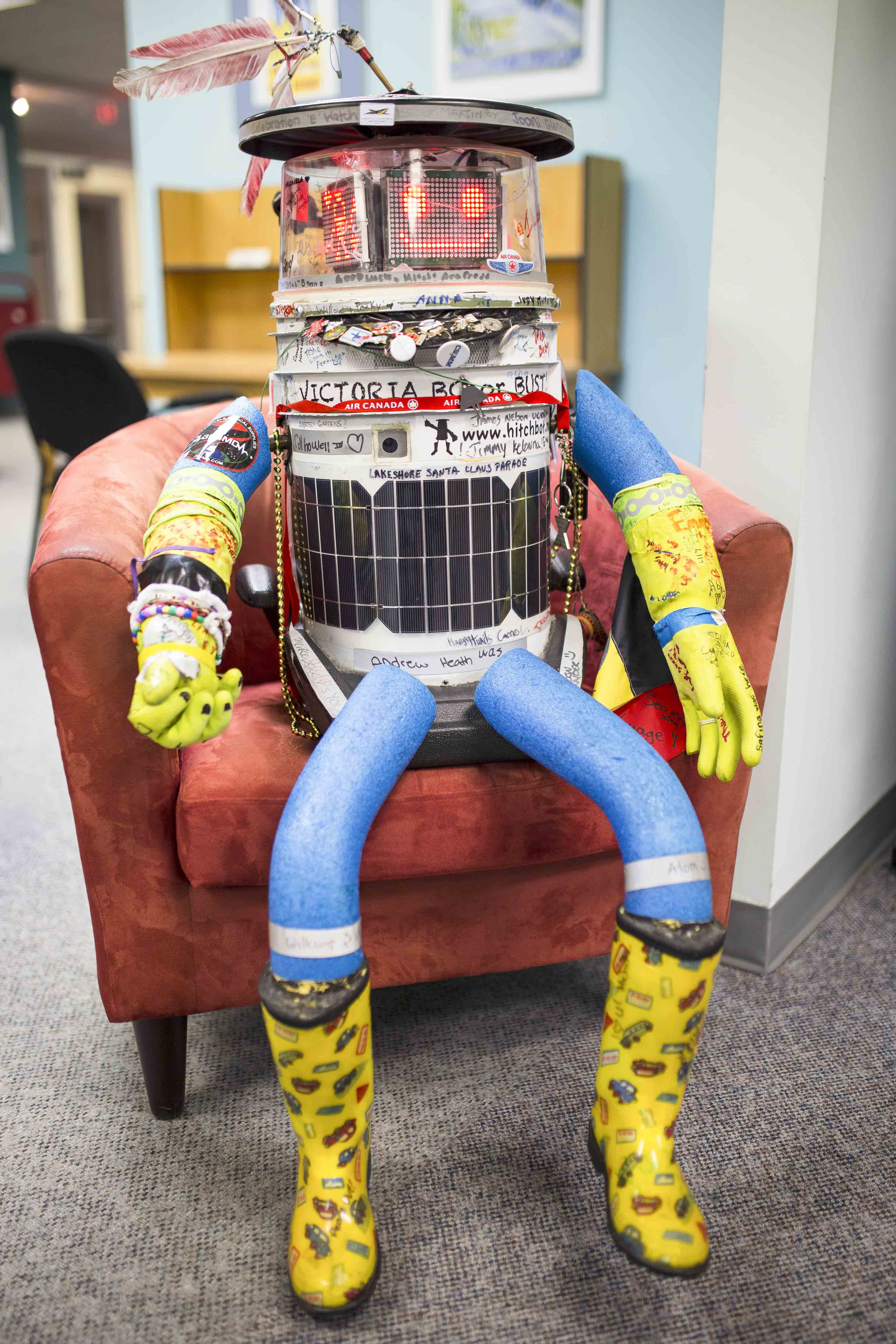The Canada Science and Technology Museum (CSTM) is set to be the final stop for hitchBot, a hitchhiking robot built by two Canadian professors that received the love of many online.
The robot is the creation of McMaster University and Ryerson University communication technology professors David Harris Smith and Frauke Zeller.
In 2014, hitchBot travelled thousands of kilometres around Canada by hitching rides with strangers. A second hitchBot model travelled across the United States in 2015, but was destroyed in August by vandals in Philadelphia. The remains were shipped back to the creators, according to Smith.
The CSTM acquired hitchBot as part of its permanent collection and it will go on display when the museum reopens in November 2017.
“This is the original hitchBot that travelled across Canada, and as a result, it was well-loved,” Smith said. “That means kids pulled and tore the rubber gloves. The arms and legs got a little bit rickety after a while. It also was damaged, I think on a dance floor somewhere.”
Smith said “retiring” the original hitchBot was the best thing for it.
“I think [the museum] is a wonderful place for hitchBot. Otherwise we wouldn’t have given it away,” Zeller said.
Tom Everett, curator of communications technology at the museum, said there were two reasons the CSTM acquired hitchBot.
“One was for its technological value and the unique contribution to artificial intelligence that the designers were exploring and playing with. The other was for its socio-cultural value as a really interesting story of Canadians relating with technology,” Everett said.
“In the case of hitchBot, I often say this wasn’t a case of scientists developing something in a lab. This was an adventure, where they actually developed this technology in a lab, but then placed it on the side of the road to see what would happen,” he explained.
Zeller admitted it wasn’t easy giving away hitchBot to the museum.
“It’s been sitting in our house for a while, and when Tom came to pick it up, it was kind of a strange moment for us . . . You get really attached to it,” she said.
Everett said he reached out to the creators of hitchBot after he discovered it last summer. When the second hitchBot was destroyed, he offered to have the museum take care of the original, and the creators agreed.
“I spent five hours on the road with hitchBot, because I picked it up at [Smith and Zeller’s] house . . . One thing about spending time with hitchBot is by the end of it, you do feel this weird attachment,” he said.
“There’s something compelling and sweet about it. It smiles and it winks, and it makes these little bleeps and bloops which lets you know that it’s ready to communicate,” he added.
Everett said he believes the museum will be a good home for hitchBot.
“We store artifacts under conditions that will allow their materials to physically hold up over time, where in private hands they would deteriorate based on the elements and humidity and light,” he said.
The plan for hitchBot now is to put it on display, and also allow Canadians to interact with it somehow from “wherever they are in Canada,” according to Everett.
“We’re hoping to have a clear plan in place by the spring time,” he said.
Smith noted he always wanted hitchBot to engage and interact with people in different ways.
“We have thousands of people who left comments on social media for hitchBot who never actually physically met the robot,” Smith said.
When the museum reopens, it won’t be hard for social media users to finally meet the robot in person.






